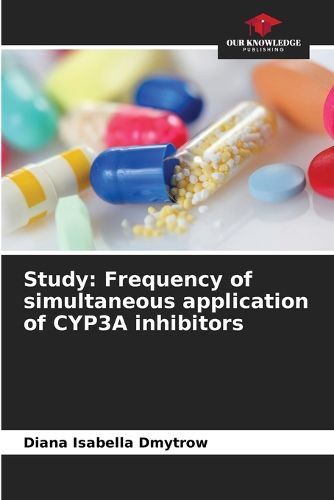Readings Newsletter
Become a Readings Member to make your shopping experience even easier.
Sign in or sign up for free!
You’re not far away from qualifying for FREE standard shipping within Australia
You’ve qualified for FREE standard shipping within Australia
The cart is loading…






The objective of this study is the empirical investigation of the frequency of simultaneously applied CYP3A inhibitors in clinical routine. A retrospective and anonymized survey was chosen as the method. The analysis yielded the following results: 8.57% inpatient days (27 of 315) and 8.33% patients (4 of 48) were exposed to simultaneous application of CYP3A inhibitors. The frequency of simultaneously administered CYP3A inhibitors is strikingly high in patients diagnosed with AML, as an above-average number, namely 0.379 CYP3A inhibitors per day, were administered simultaneously. In comparison, NSCLC patients received only 0.053 and SCLC patients only 0.091 CYP3A inhibitors simultaneously per day.The suspicion that patients with AML are more likely to receive CYP3A inhibitors on inpatient days than all other patients was tested by the hypothesis test chi-square (? (2)), Phi coefficient (?) and Cramer's V index (CI) and was found to be significant.
$9.00 standard shipping within Australia
FREE standard shipping within Australia for orders over $100.00
Express & International shipping calculated at checkout
The objective of this study is the empirical investigation of the frequency of simultaneously applied CYP3A inhibitors in clinical routine. A retrospective and anonymized survey was chosen as the method. The analysis yielded the following results: 8.57% inpatient days (27 of 315) and 8.33% patients (4 of 48) were exposed to simultaneous application of CYP3A inhibitors. The frequency of simultaneously administered CYP3A inhibitors is strikingly high in patients diagnosed with AML, as an above-average number, namely 0.379 CYP3A inhibitors per day, were administered simultaneously. In comparison, NSCLC patients received only 0.053 and SCLC patients only 0.091 CYP3A inhibitors simultaneously per day.The suspicion that patients with AML are more likely to receive CYP3A inhibitors on inpatient days than all other patients was tested by the hypothesis test chi-square (? (2)), Phi coefficient (?) and Cramer's V index (CI) and was found to be significant.